Complete Apple Tree Care Guide: Everything You Need to Know For a Tasty Backyard Orchard
Learn how to grow apple trees in your own backyard and enjoy bountiful harvests for years to come. From planting to harvest, these tips will help you grow.
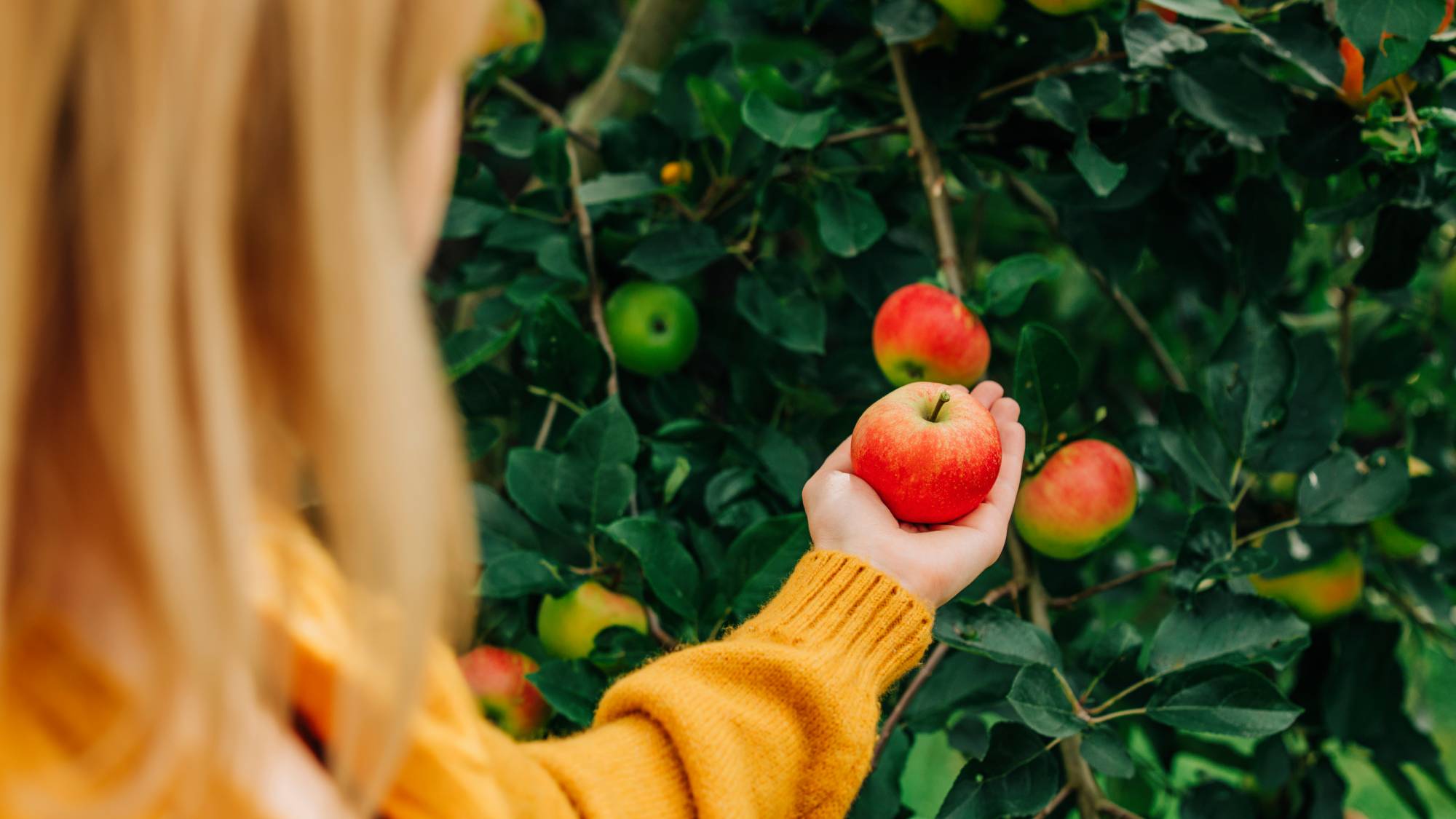

Growing apple trees in your yard is a delicious endeavor that will yield returns year after year. Apple trees are the most commonly cultivated fruit tree in the United States and many home gardeners lovingly tend their small orchards or espaliered apple trees with great success. There is nothing better than a fresh picked apple and, if you grow your own apple tree, you can have all that fall flavor without having to drive into the country to find an orchard!
Apples are packed with health benefits, the trees produce cute spring flowers, and they help your local pollinators. Planting apple trees in your garden is a win for you and the environment. Apple trees aren’t hard to grow, but you do need to understand the care and maintenance to have success with them. Proper pruning and pest management are crucial in growing healthy apple trees.
Since apple trees are so widely cultivated, there are many different types to choose from that will suit your landscape and culinary needs. There are more than 7,500 cultivars of culinary apples worldwide. Some are better suited for snacking, others for cider productions, and still others for delicious baked goods. Apples have been loved all around the globe for millennia. Even Pliny the Elder wrote about the best way to store apples in the first century. Let’s take a bite out of the venerable Malus domestica and learn how best to grow them!
Botanical Name | Malus domestica |
Plant Type | Deciduous fruit tree |
Height | 6-30 ft (2-9.14 m) depending on variety of rootstock |
Spread | 6-30 ft (2-9.14 m) depending on variety of rootstock |
Light | Full Sun to partial shade |
Soil | Well-draining soil; pH 6-7 |
Hardiness | USDA Zones 4-9, though some are more cold hardy (Not in the US? Convert your zone) |
Flowers | Spring |
Native Range | Central Asia |
Planting Apple Trees
It is important to note that an apple tree needs to be planted near another variety of apple tree in order for it to be successfully cross-pollinated and produce fruit. Even a crab apple tree in your neighborhood will work, as long as the crabapple is within 100 ft (30.5 m) of your tree. Apple trees are generally grown from bare rootstock and are best planted in the early spring or late fall. In the spring, plant them as soon as the ground can be worked. In the fall, plant them once all the leaves are gone and before the first frost.
Apple trees can be planted in almost any soil, as long as it doesn’t retain any standing water after a rain or irrigation. Spacing for apple tree planting is determined by the type of rootstock they are growing from. Scions are shoots of a tree that are grafted onto rootstock that is chosen for its mature size or disease resistance. Dwarf rootstock trees typically max out at 8-10 ft (2.4-3.1 m) tall and standard rootstock trees can grow to 25-30 ft (7.6-9.1 m). They need as much space around them as their mature height.
Soil Requirements
Apple trees require a soil pH between 6.0 and 7.0. They can thrive in just about any type of soil—loam, clay, sand—as long as it doesn’t retain any standing water after rain or irrigation. Before planting your apple trees, test your soil pH with this top-rated soil pH test kit from Amazon. You can also test your soil’s water retention by watering the planned planting area with the hose for a few minutes to simulate a heavy rainfall. If there is any water standing in the area two hours later, you should pick a better draining area to plant your apple trees.
Light Requirements
Apple trees require a good amount of sunlight per day to produce quality fruit. They do best in full sun locations. This means they receive 6-8 hours of sunlight per day. They can also do well in a dappled or partial shade area if you don’t have a spot that gets sun for a full 8 hours.
Sign up for the Gardening Know How newsletter today and receive a free copy of our e-book "How to Grow Delicious Tomatoes".
Planting Apple Trees: Step-by-Step
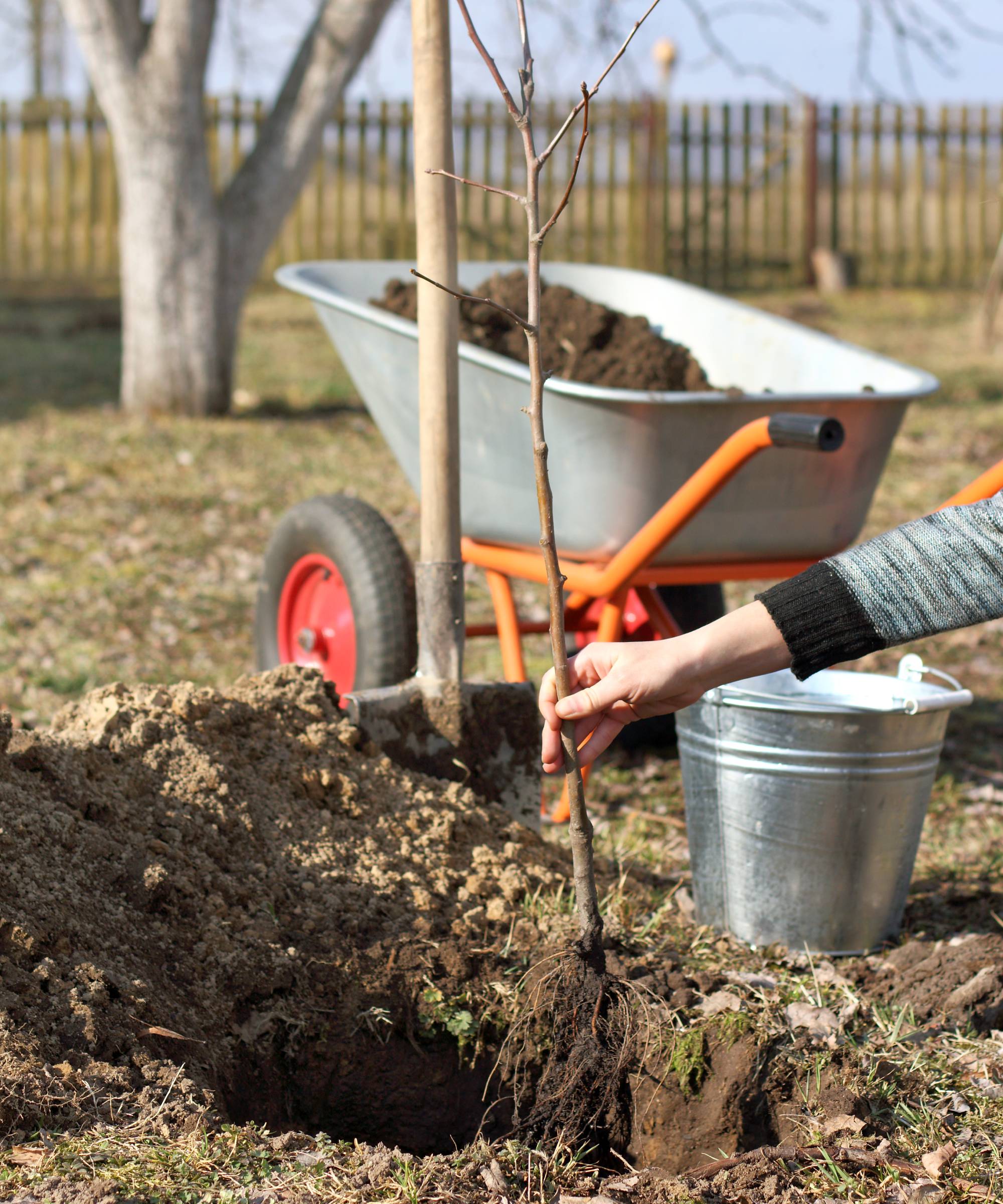
- Choose varieties – You will need two different cultivars of apple trees so they can be pollinated and produce fruit. They also need to have viable pollen and bloom at the same time. Choose types of apple tree that will do well in your USDA hardiness zone and that will fit in your space. Dwarf, semi-dwarf, and standard rootstock apple trees have vastly different space needs.
- Choose location – Pick a location that gets full sun and doesn’t get waterlogged after rains. A location where they receive early morning sun is best. The soil in your planting location should have a pH of between 6.0 and 7.0. You should also ensure you have proper space for apple trees. Dwarf and semi-dwarf rootstock apple trees will grow between 6-8 ft (1.8-2.4 m) and 12-15 ft (3.7-4.6 m) respectively. A standard rootstock apple tree will grow 20-25 ft (6.1-7.6 m). Your apple trees will spread about the same width as their height, so take this into consideration when you are choosing your location.
- Soak and dig – While you are digging holes for your new trees, soak their roots in a bucket of water for half an hour. Ensure that you dig holes that are deep enough and wide enough to accommodate the root structure when spread out. Place soil that you dig on a tarp so you can easily backfill later.
- Fill in the hole – Hold the tree in the hole and ensure the union of the scion and the rootstock is at least 3 in (7.6 cm) above the ground. Gently backfill your soil around the roots and add some good quality organic compost. Tamp the soil as you go to remove any pockets of air and ensure the tree is stable and standing up straight.
- Give trees a drink – After you have planted your new apple trees, water them thoroughly and tamp the soil gently to remove any other pockets of air. Add more soil as needed.
Apple Tree Care
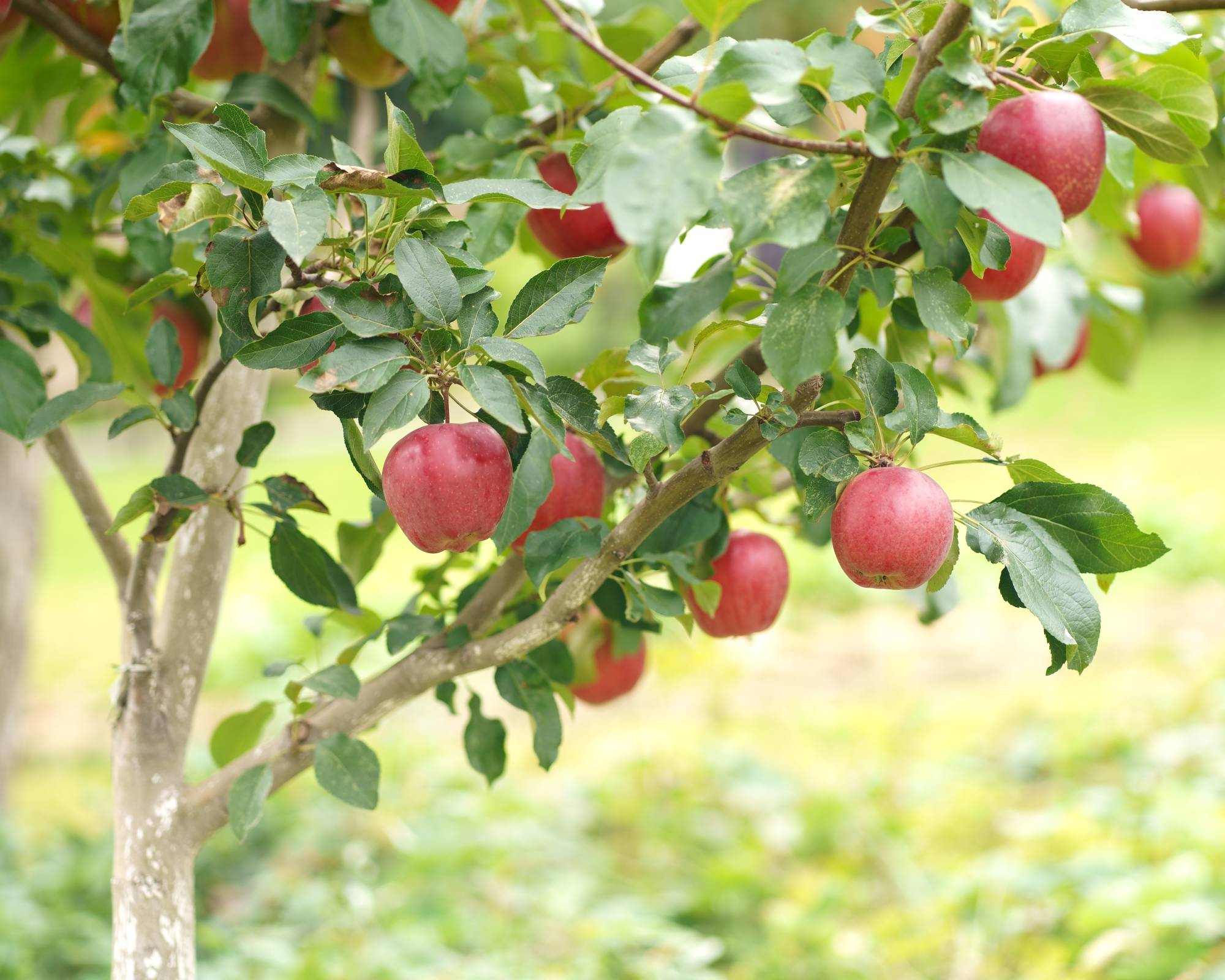
Apple tree care is fairly straightforward and you can have great success and bountiful harvests even in your backyard. You can also get complicated and espalier fruit trees through years of pruning and training. But that is not necessary if you just want some small apple trees to add an edible element to your garden!
Watering Apple Trees
Water newly planted apple trees lightly two to three times a week for the first year. Established trees can be watered deeply once a week. Using a soaker hose irrigation system will help you water your apple trees efficiently. This soaker hose from Amazon will help to save water by targeting the roots of your apple trees and wasting less.
Fertilizing Apple Trees
Fertilize apple trees in early spring as the buds begin to come in. Using a half pound (0.2 kg) of fertilizer per year of tree age is a good guideline. So a 1 year-old tree gets a half pound of fertilizer, a 2 year-old tree gets one pound (.45 kg) of fertilizer, and so on. Use a 10-6-4 NPK fertilizer and spread the granules under the tree canopy but not right up on the trunk. This 10-6-4 fertilizer from Amazon is a good choice.
Young, non-producing apple tree branches grow 12-18 inches (31-25 cm) per year and fruit-bearing tree branches grow 8-12 inches (20-30.5 cm) per year. If your trees’ branches are growing more than that, you should not fertilize. You can also test your soil to see if there are any nutrient deficiencies with a soil test kit from Amazon.
Mulching Apple Trees
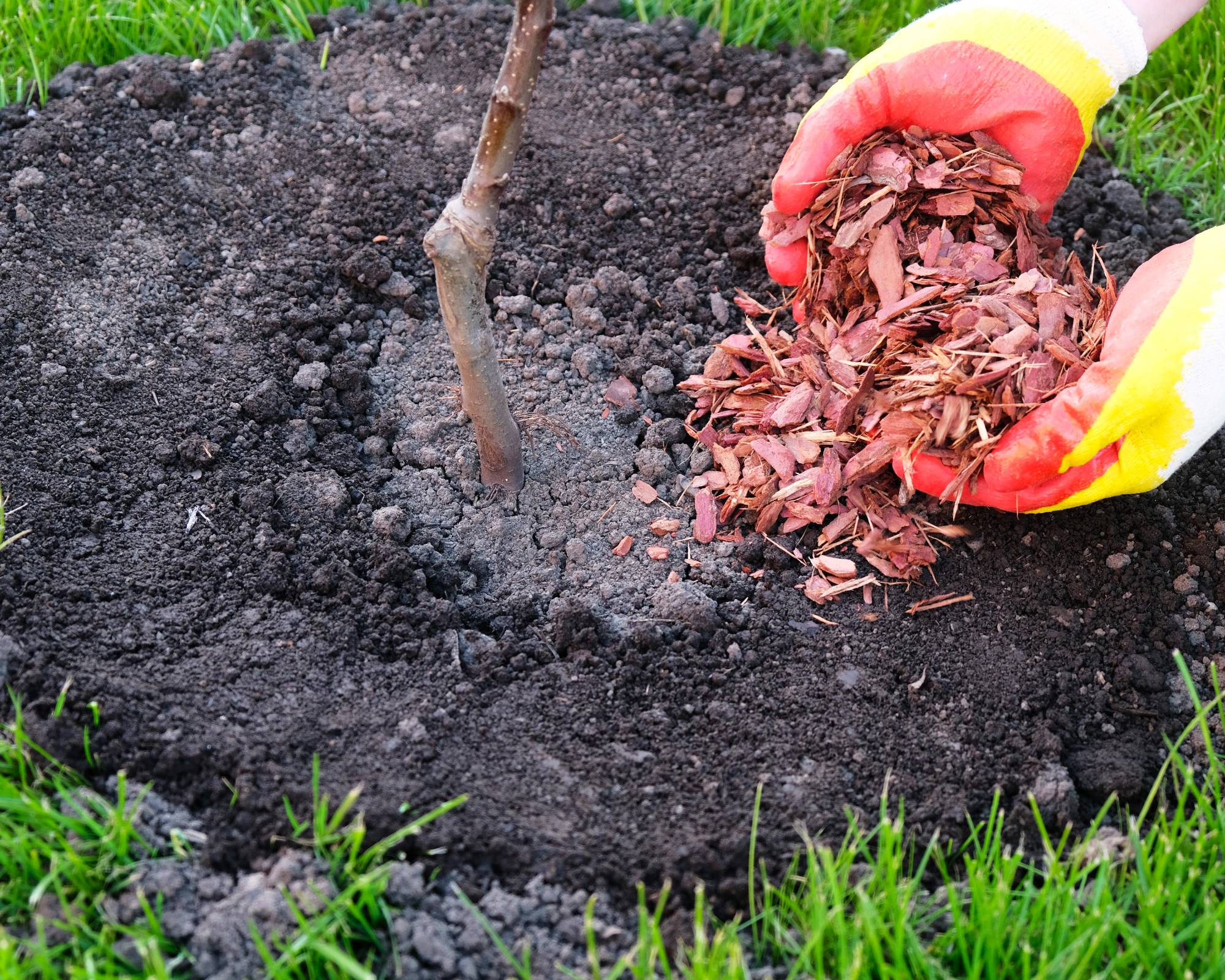
Young apple trees need mulch two to three feet (0.6-1 m) around them to help keep weeds and other competing plants at bay. Spread a layer of mulch that is 2-3 inches (5.1- 7.6 cm) deep to help retain moisture and prevent those pesky weeds. Keep the mulch a few inches away from the trunk so that fungal growth does not become a problem.
Other Care Considerations
Applying a tree guard around the trunk of a young apple tree can help protect it from animal damage and winter damage within the first few years of its life. As the apple tree matures, it will develop flaky bark that will prevent damage. You can find these easy-to-install tree guards from Amazon.
Stake your newly planted apple trees for the first few years to ensure they grow straight and don’t get blown over by strong winds or storms. A wooden stake driven into the ground 4-6 inches (10.2-15.2 cm) away from the tree and a few feet deep should be as tall as the tree. Attach the tree to the support stake with a woven tree strap like this one from Amazon to prevent any damage to the young trunk.
Pruning Apple Trees
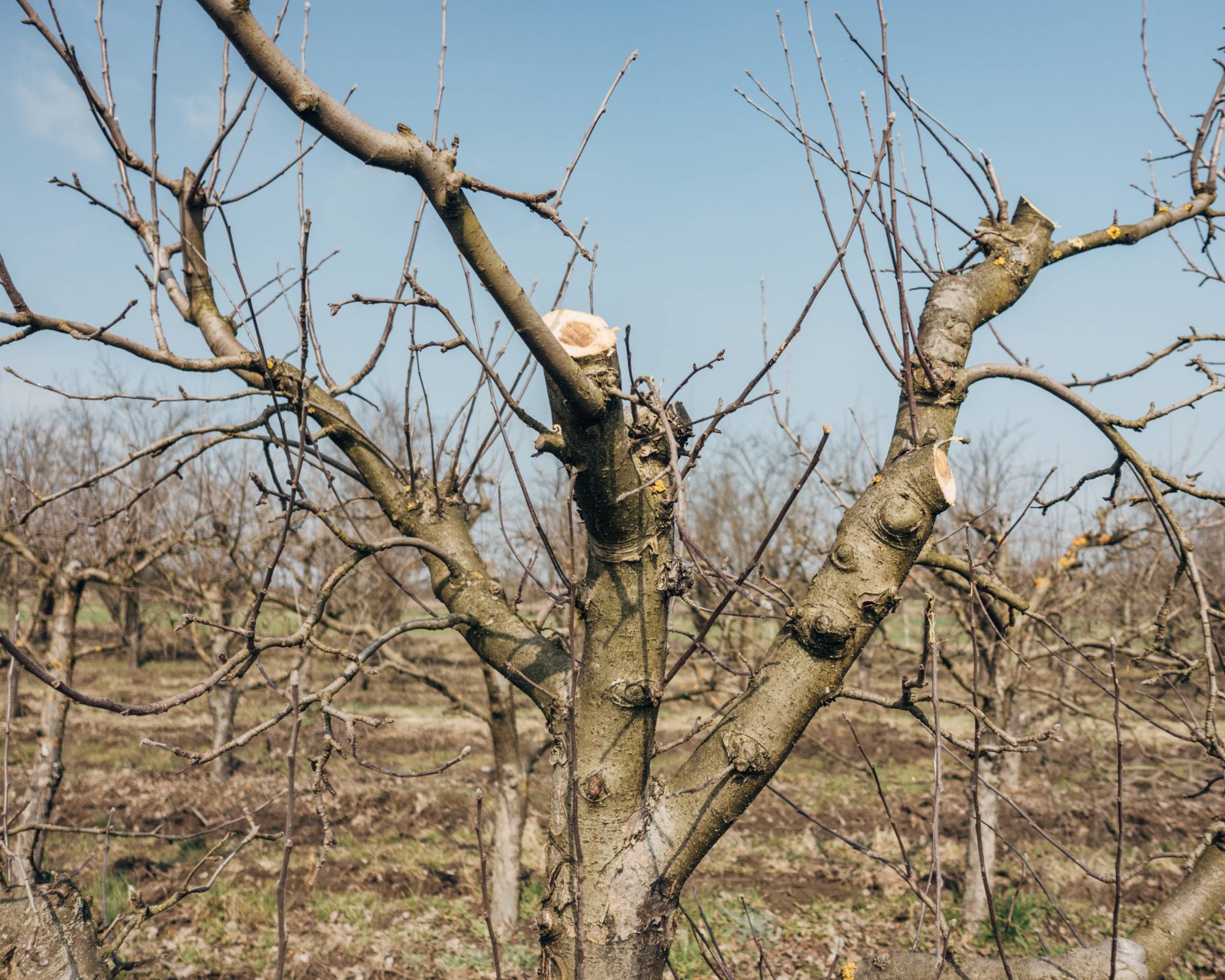
Pruning apple trees is critical to the health of the tree and the production of fruit. Proper pruning allows more light to reach the flowers and fruit, makes for a stronger tree, allows more air circulation around the fruit, and also makes for easier apple picking!
Prune apple trees in the late winter to early spring when they are still dormant, but after the most severe cold has passed. To prune apple trees, first sharpen and sterilize your pruners so diseases aren’t transferred to the apple tree. Then, go through your tree and cut off any branches that are dead, broken, or diseased. If any branches cross each other or are twisted, remove one of them at the base so they don’t compete with each other.
Decide which vertical branch will be your ‘leader’ and then prune back limbs below it so that the remaining limbs are evenly spaced and the tree will be balanced. Be sure not to prune away too many branches or the tree will put all of its energy into growing new branches and not producing apples.
You should also prune water sprouts which are thin vertical shoots that rise from the trunk or branches of the apple tree. Remove water sprouts as they grow throughout the year.
Disinfect your pruners between cuts to prevent the spread of disease. You can bring a small bucket with one part household bleach and nine parts water with you as you trim your trees to easily dunk them in as you go.
Thinning Apples
Thinning apples on your trees is important to the success of your future harvests. If apple trees bear too many fruit one year, they might produce less fruit the next year. When fruits are the size of a marble—usually around June or July—go through the branches and prune off excess fruits. Leave only one or two apples to develop from each cluster.
Important Note: You should remove any fruit from your trees in the first two years so that they can focus on growing and becoming strong, not on fruit production.
Espalier Apple Trees
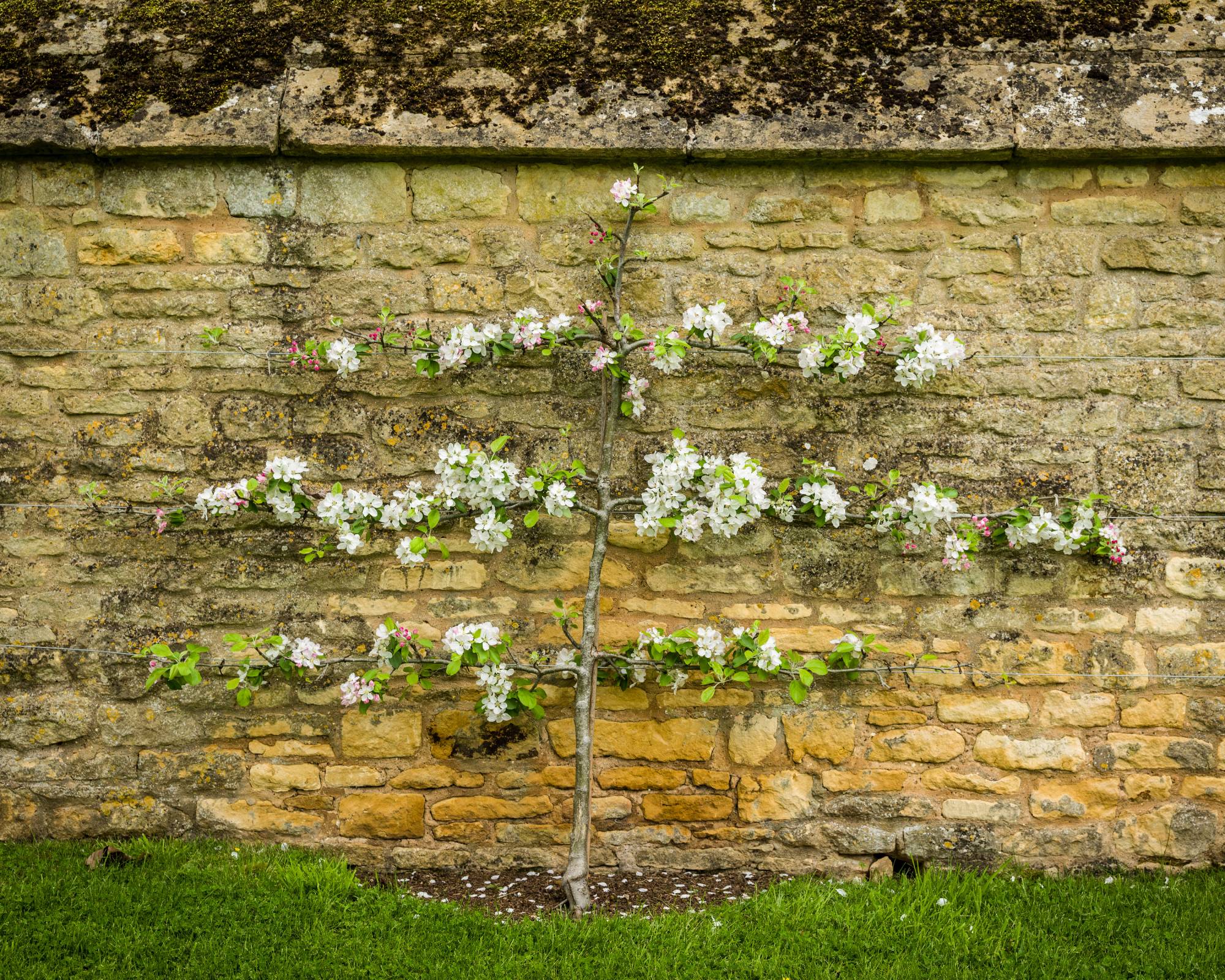
Espalier is the practice of pruning and training a woody shrub or tree to grow on a flat plane, like against a wall, fence, or trellis. Espaliered fruit trees allow gardeners to have trees in smaller spaces that ordinarily wouldn’t accommodate a tree.
Growing espaliered apple trees is not only great for adding an unusual aesthetic element in your garden, it can also help you grow a better tree. Having your espaliered tree on a south-facing wall gives you a longer growing season because of the added warmth and sun exposure. You might even be able to grow a tree that is better suited to a warmer climate than your location.
Apple Tree Care Calendar
| Row 0 - Cell 0 | Spring | Summer | Fall | Winter |
Plant & Move | ✓ | Row 1 - Cell 2 | ✓ | Row 1 - Cell 4 |
Fertilize | ✓ | Row 2 - Cell 2 | Row 2 - Cell 3 | Row 2 - Cell 4 |
Mulch | ✓ | Row 3 - Cell 2 | ✓ | Row 3 - Cell 4 |
Prune | ✓ | Row 4 - Cell 2 | Row 4 - Cell 3 | ✓ |
Thin Fruit | ✓ | ✓ | Row 5 - Cell 3 | Row 5 - Cell 4 |
Trim Water Spouts | ✓ | ✓ | ✓ | ✓ |
Harvest | Row 7 - Cell 1 | ✓ | ✓ | Row 7 - Cell 4 |
Varieties of Apple Tree
There are many different cultivars of apple trees and choosing the ones that are right for you takes some narrowing down. Regardless of specific cultivar, dwarf rootstock apple trees produce fruit within a few years and standard rootstock trees produce by years 8-10. Let’s explore some questions to help you choose the best types of apple tree for you.
Firstly, you need to assess your location. What kind of space do you have? What growing zone are you in? And how many ‘chill hours’ does your location get on average? If you have a small yard, dwarf trees will probably be a good choice. Like with other fruit trees, apple fruit production relies on a sufficient number of hours below 45 degrees F (7.2 C). Each variety of apple requires a different number of chill hours so not every type of apple is suitable for every part of the country.
Secondly, how much care do you want to give to your apple trees? Some varieties are more disease resistant than others and need less chemical disease management. You should also choose apple trees based on when you want a harvest. There are early season, mid-season, and late season apples depending on what timing you would like.
Another factor to consider is how do you want to use your apples? Some apple varieties are better for baking, snacking, preserving, freezing, and storing than others.
| Row 0 - Cell 0 | Harvest Time | Snacking | Baking/Sauce | Freezing | Storage |
mid-October | ✓ | ✓ | Row 1 - Cell 4 | 6+ months | |
mid-October | ✓ | Row 2 - Cell 3 | Row 2 - Cell 4 | 6+ months | |
early September | ✓ | ✓ | Row 3 - Cell 4 | 3-6 months | |
mid-September | ✓ | ✓ | ✓ | 3-6 months | |
mid-October | ✓ | Row 5 - Cell 3 | Row 5 - Cell 4 | 3-6 months | |
mid-October | ✓ | Row 6 - Cell 3 | Row 6 - Cell 4 | 3-6 months | |
mid-August | ✓ | Row 7 - Cell 3 | Row 7 - Cell 4 | 2-3 months | |
mid-September | ✓ | ✓ | ✓ | 3-6 months | |
late October | ✓ | ✓ | Row 9 - Cell 4 | 3-6 months | |
mid-August | ✓ | Row 10 - Cell 3 | Row 10 - Cell 4 | 3-6 months | |
mid-September | ✓ | Row 11 - Cell 3 | Row 11 - Cell 4 | 2-3 months | |
Jonathan | early September | ✓ | ✓ | ✓ | 3-6 months |
early September | ✓ | ✓ | ✓ | 3-6 months | |
mid-July | Row 14 - Cell 2 | ✓ | Row 14 - Cell 4 | A few weeks | |
early September | ✓ | ✓ | Row 15 - Cell 4 | 3-6 months | |
Northern Spy (heirloom) | mid-October | Row 16 - Cell 2 | ✓ | Row 16 - Cell 4 | 6+ months |
Winesap (heirloom) | early October | ✓ | ✓ | Row 17 - Cell 4 | 6+ months |
York (heirloom) | mid-October | ✓ | ✓ | Row 18 - Cell 4 | 6+ months |
Apple Harvest
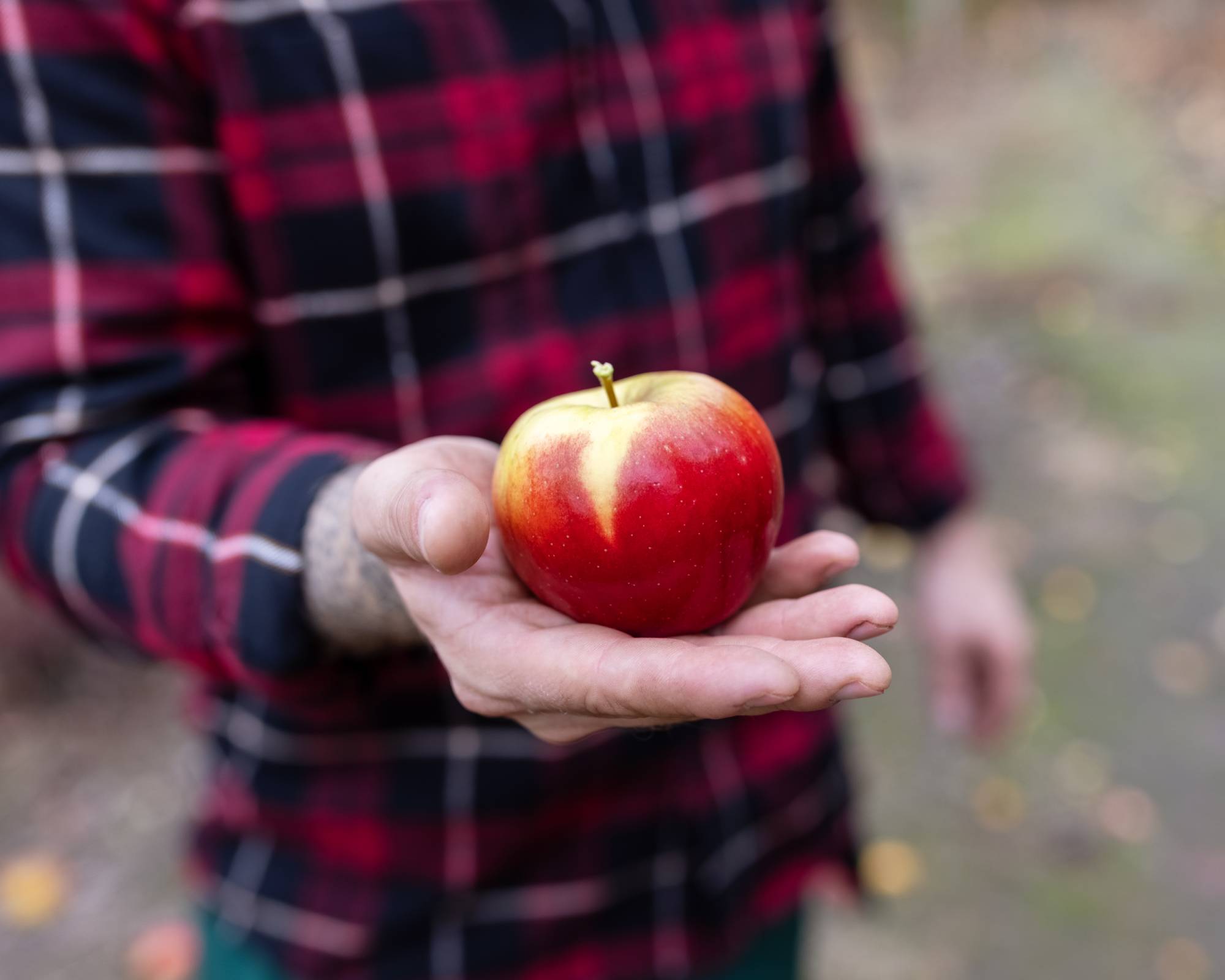
Knowing when to harvest apples takes a little practice. Apples fall into different categories of early season, mid-season, and late season for harvesting, but it is still all dependent on the weather. Overall, it is better to harvest a little early than late.
Some early season apples like ‘Lodi’ and 'Earligold' can be ready to pick as early as mi-July, and late season apples like heirloom ‘Northern Spy’ and ‘York’ aren’t ready until mid-October. Be sure to check the label on the apple tree saplings when you purchase them to know when their harvest time is and keep an eye on the apples themselves to tell you more.
Apples will be ready to harvest when the ‘background’ color on their skin has turned a pale yellow from bright green. Apples can be bright red in parts, but if there is still green showing in patches like around the end blossom, then it is not ripe yet. You can also cut into an apple to see what it looks like on the inside. Underripe apples will be tart, very firm, and starchy. Ripe apples will be firm, crisp, juicy, and taste like their variety. Ripe apples will have brown seeds inside, too.
How to Harvest Apples
Use your palm to gently cup the bottom of the apple and roll the apple up. A ripe apple will pop right off the branch with little effort as it is rolled upwards. Gripping hard with fingertips can lead to bruising so be sure to use your palm with closed fingers.
How to Store Apples
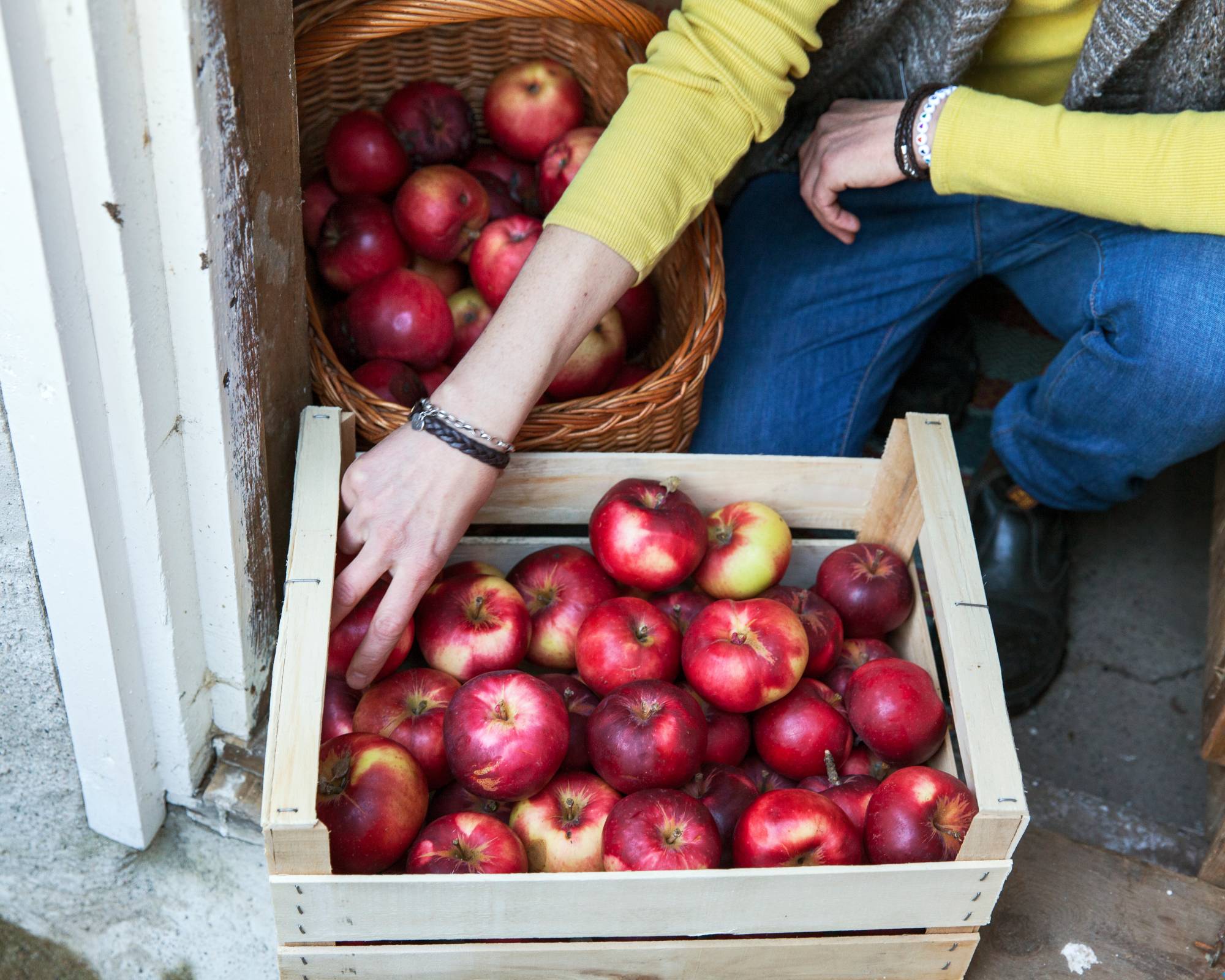
Before storing apples, it is important to go through the harvest and pick out any diseased or damaged apples. They will lead to the rest of the bushel becoming diseased. It is also important to not keep apples that have fallen to the ground stored with freshly picked apples. This can also spread disease. Fallen apples are fine to eat as long as they have not been munched on by animals or set upon by wasps.
Some varieties of apples will last 6+ months if stored properly, but others only last a few weeks. Take this into consideration when you are choosing the varieties you will plant.
Store your apple harvest between 32 and 34 degrees F (0-1.1C) to ensure they don’t begin to overripen or rot. It is also important to keep them in the dark. A fridge in your garage is the perfect place for your apple harvest. Just don’t store carrots near your apples or the carrots will become bitter and rot faster.
Common Apple Tree Problems

There are a variety of pests and diseases you need to look out for to ensure your apple trees stay healthy and consistently produce a good crop of fruit. Here are some of the common problems you may encounter.
Pests
Unfortunately, a wide array of pests affect apple trees. The worst three pests for apple trees are apple maggots, codling moths, and plum curculios. Additionally, apple trees and fruits can be affected by rosy apple aphids, wooly aphids, armored scales, San Jose scale, tree borers, boxelder bugs, stink bugs, and climbing cutworms.
It is important to treat any infestations you find quickly. Depending on the type of pest, you can use horticultural oil, pheromone traps, fruit covers and sticky traps. Whatever pest control method you choose, remember to be kind to the pollinators and practice safe pesticide usage. Keeping pollinators happy and healthy is crucial to your apple trees producing fruit.
Diseases
Common diseases of apple trees include:
- Apple scab - fungus that leaves wart brown bumps on leaves and fruit
- Powdery mildew - fungus that stunts growth
- Black rot - fungal disease that destroys fruit, leaves, and limbs
- Cedar apple rust - fungus that forms galls and defoliates trees and leads to malformed fruits
- Collar rot - causes stunted growth and eventually girdles and kills the apple tree
- Sooty blotch - blemishing fungus that makes fruits look bad, but they are still edible
- Flyspeck - causes cosmetic damage to the fruit but is not lethal to tree
- Fire blight - bacterial disease that cause dieback of branches and can kill the apple tree
Special Considerations
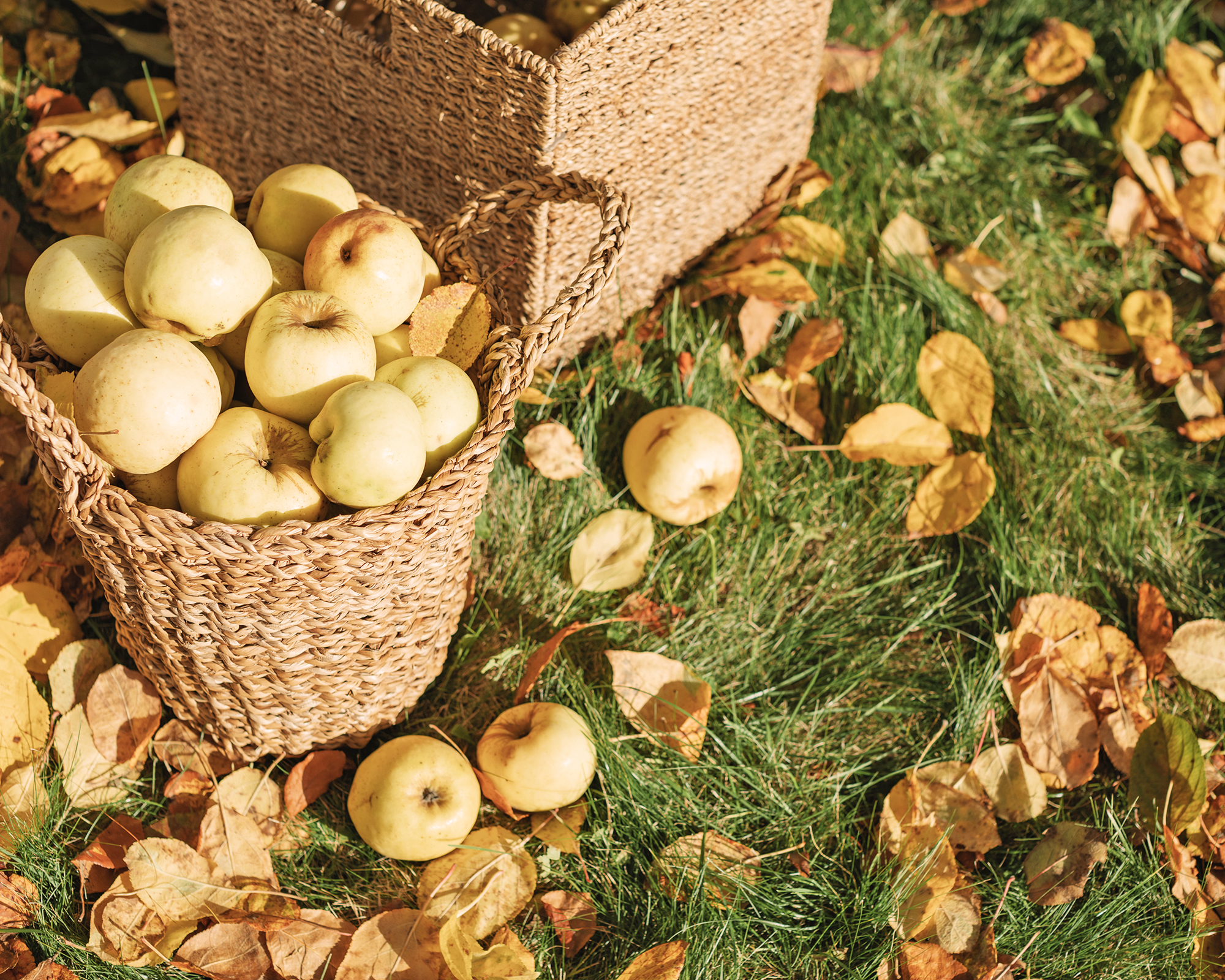
Appropriate chill hours are critical for apple production. Chill hours are the number of hours between 32 and 45 degrees F (0-7 C) the apple tree requires. In this way, USDA hardiness zone is not the only climatic factor you need to weigh when selecting which types of apple trees to plant. You can see how many chill hours your location receives over a year with a handy chilling hours map from the Midwestern Regional Climate Center at Purdue University.
Low chill hour apples require less than 500 chill hours and include varieties like ‘Anna’, ‘Dorsett Golden’, 'Gala', 'Gordon', ‘Tropic Sweet’, and ‘Ein Shemer’.
Medium chill varieties are apples that need chill hours of between 700 and 1,000 chill hours and include 'Golden Delicious', 'Gravenstein', 'Newton', 'Rome Beauty', and 'Braeburn'.
High chill apples are those that require more than 1,000 chill hours and include 'Honeycrisp' and 'Red Delicious' varieties.
Apple Tree Care Must-Haves
- Prune water spouts and small branches with ease when using our editorial team's favorite Felco pruning shears, available from Amazon.
- The Greenworks mini cordless chainsaw from Amazon is perfect for trimming larger branches from your apple tree and charges in just 60 minutes.
- Bonide Captain Jack's neem oil from Amazon will treat insects, fungi, and mite infestations on your apple trees so you can have a pest- and disease-free harvest.

The cutest garden gloves that are perfect for picking ripe apples from your backyard orchard.
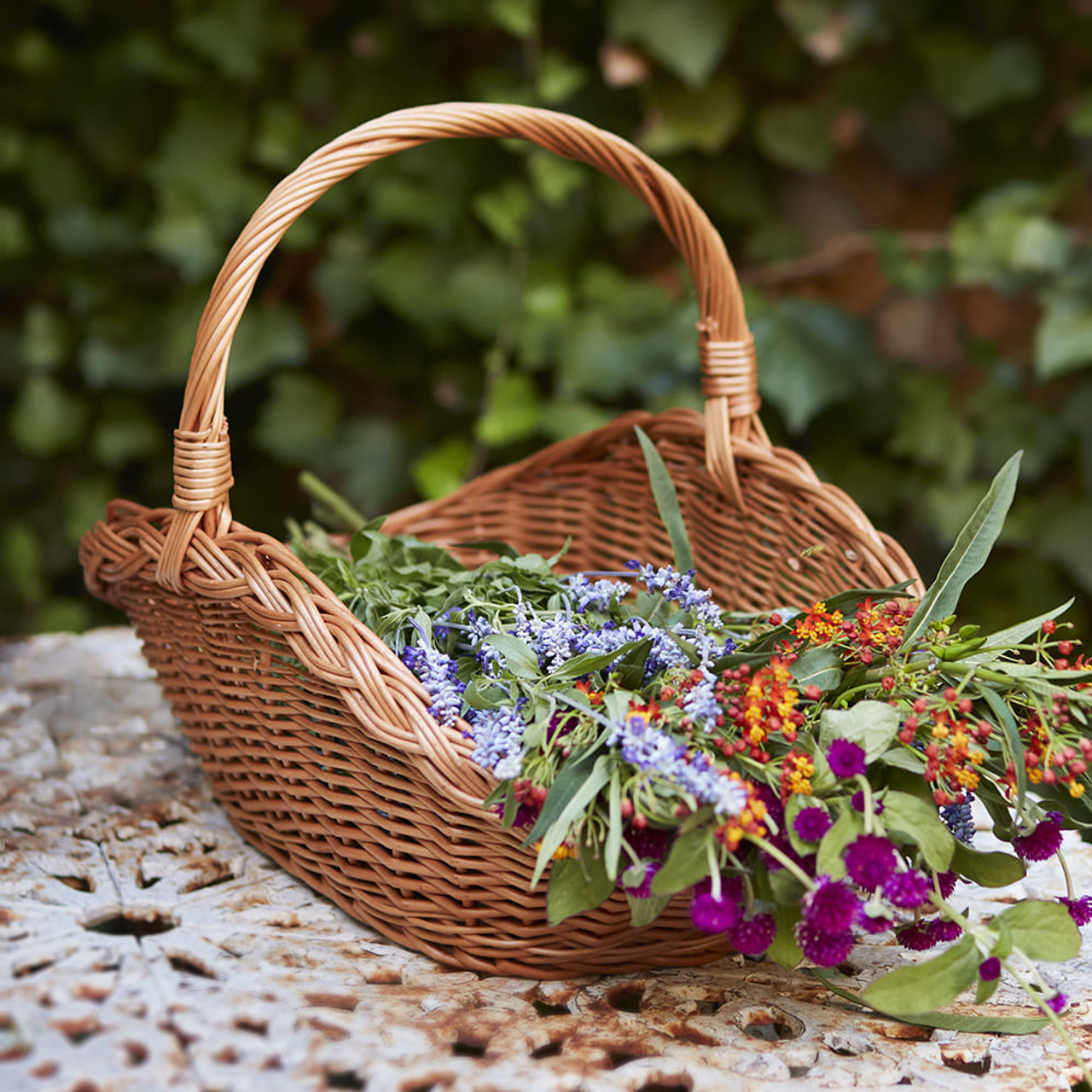
Tote your newly harvested apples with a stylish handwoven wicker basket that is made in Europe.
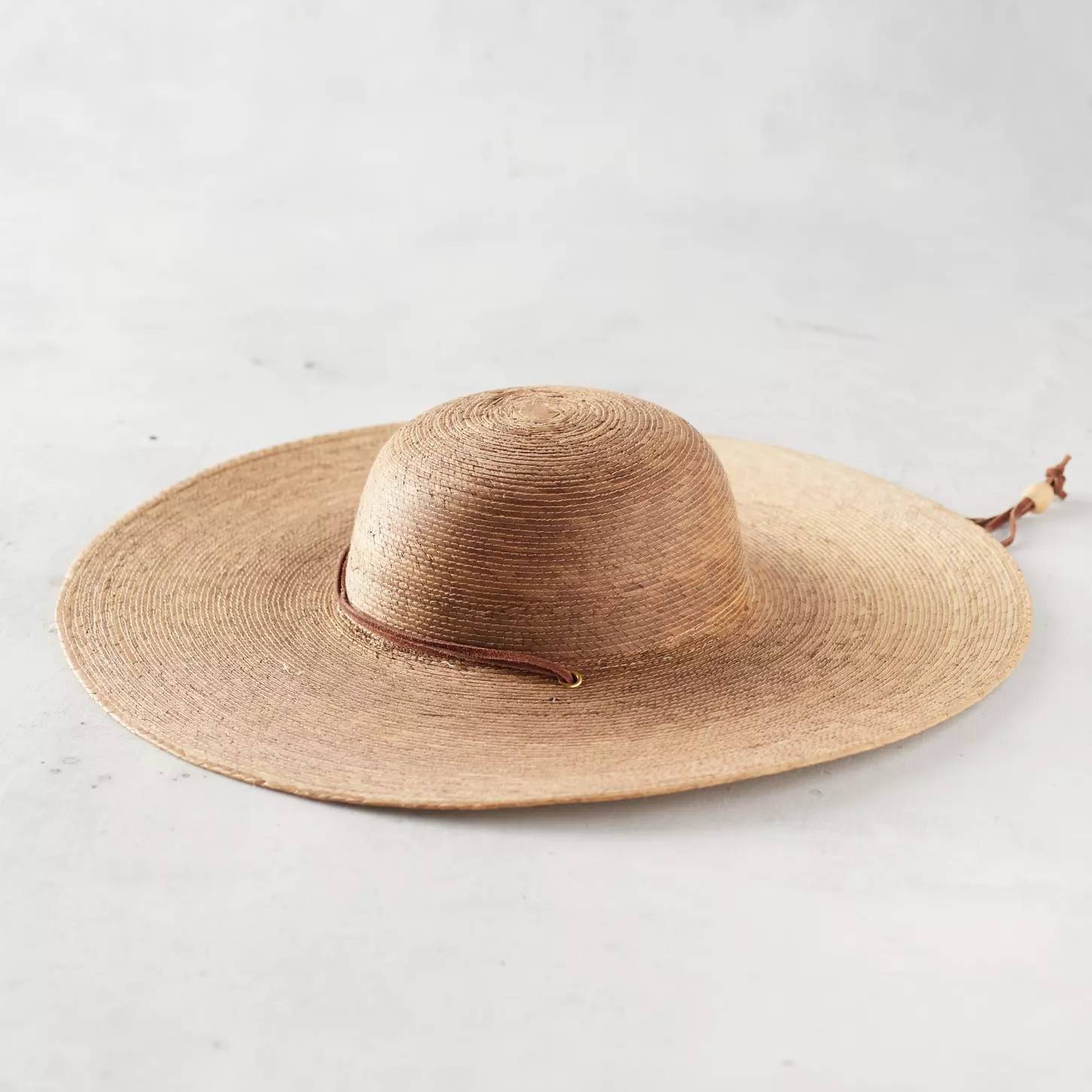
This wide brim handwoven sun hat keeps the sun off you while you garden with UPF 50+ protection.

Kathleen Walters joined Gardening Know How as a Content Editor in 2024, but she grew up helping her mom in the garden. She holds a bachelor’s degree in History from Miami University and a master’s degree in Public History from Wright State University. Before this, Kathleen worked for almost a decade as a Park Ranger with the National Park Service in Dayton, Ohio. The Huffman Prairie is one of her favorite places to explore native plants and get inspired. She has been working to turn her front yard into a pollinator garden.